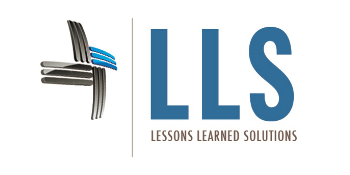RECLAIMING THE MORAL HIGH GROUND IN FAITH AND PRACTICE
Lessons Learned Solutions LLC
Overview
At great price and sacrifice, the Union army was able to hold the HIGH GROUND at Gettysburg resulting in a victory many considered the turning point of the Civil War. In life, there is a moral high ground. There are lines that should not be crossed. There is ground worth protecting and defending. I believe that that the moral high ground is under attack and at risk in our world today. The battle to secure and hold the HIGH GROUND is not as visible as the events at Gettysburg in 1863 but just as serious.
Elders and their families are facing significant care giving challenges as efforts are being made by many individuals and companies with a variety of agendas to keep pace with an American population that is living longer and healthier than at any time in U.S. History. The impact of individualism, the tendency of those who claim to have faith in Christ to mirror rather than to change the culture, and an ever-increasing reliance upon government can easily dilute and diminish the mission of a faith-based ministry; thus placing the HIGH GROUND at risk.
Elders are easily devalued and marginalized. Dollar-driven systems and mindsets, well-intentioned quality initiatives, the rise of the senior adult orphan, the increase in physician assisted suicide; all point to the impact of the erosion and loss of the HIGH GROUND.
What is ‘High Ground At Risk?’
In 2000, a thesis entitled “High Ground at Risk” was completed and written as part of a requirement for completing a Master’s degree in Christian Thought along with an emphasis in Bio-Ethics. It appears that many of the major concerns (gathered from feedback from long-term care sector leaders) from 1999/2000 listed below continue to not only be relevant today but may even be of heightened concern.
- Ongoing needs to validate and legitimatize not-for-profit status.
- Blurring of distinction between for profits and not for profits.
- No real overall regulation of industry. Piecemeal approach.
- Need for more private funding.
- Ability of industry to absorb rapid rate of change.
- Labor issues and increasing costs of maintaining quality living environment.
- Tendencies to focus on management issues without leadership or vision.
- Impact of baby boomers. High involvement in decision making process.
- Question of whether baby boomers will share from their resources.
- Lots of review of the continuum ahead based on choice, flexibility and options.
- Significant numbers of people without resources.
- Need for a greater emphasis on educating people about long-term care risks.
- Resource allocation issues – increased levels of service demands within some types of fixed budgets.
- Implications of rationed health care.
- Difficulty of going it alone as a stand alone CCRC.
- Increased cultural diversity.
- Concerns about advocacy – who speaks for those most vulnerable.
- Ongoing tension between funding sources – private and public resources.
- Baby boomer generation different mindset than World War II generation.
- Aging healthier and living longer raises significant service and demand issues.
- Staffing issues – ability to recruit and retain people.
- Ability to recruit leadership that identifies with organization’s mission.
- Concern about doing what we say we will do within the marketplace.
Stay tuned for approaches to these ongoing and heightened concerns from a High Ground at Risk distinctive and perspective.


